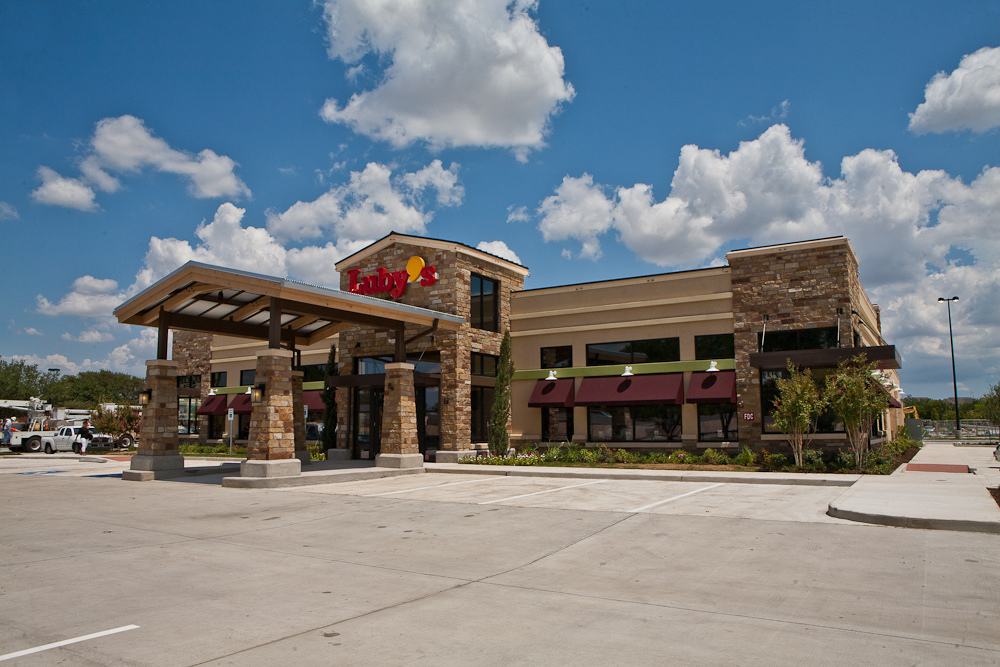
Luby’s Incorporated: Brand Turnaround
In a marketplace brimming with search-and-switch customers, plenty of brands will go in the ditch. How do you know whether a brand can be saved? How do you bring it back? These insights can help.
April 19, 2007 was a red-letter day in a brand turnaround. I got to stand with my fellow Luby’s board members and close the trading session at the New York Stock Exchange. Luby’s, Inc. (LUB) celebrated 25 years as a public traded company, with a closing stock price of $10.13 for the day. That same year, Luby’s also celebrated its 60th anniversary as an established “Texas Restaurant Institution” having opened the first Luby’s in San Antonio, TX in 1947. But in 2001, the Luby’s brand was in real peril. Massive debt from zealous over-building, declining sales, sliding food quality, tired cooking and dining facilities and an aging customer base were just a few of the problems that had derailed the stock to a share price as low as 99 cents.
What drove Luby’s turnaround? A talented crew led by long-time Houston restaurant entrepreneurs, brothers Chris and Harris Pappas, whose 60+ privately-owned restaurants have been Texas restaurant stand-outs for decades. With their keen eye for ‘first-things-first, the Pappas (Chris, as Chief Executive Officer and Harris as Chief Operating Officer) navigated the Luby’s organization back from the brink of bankruptcy and through a successful turnaround. Here are some lessons from their journey.
Their first order of business was to carefully access whether the brand could be, well, turned around. They paid close attention to two key factors:
Weigh Risk Versus Reward. Did the turnaround’s likelihood of success, and the rewards that come with it, outweigh the risk of failure? Many brand turnarounds carry heavy risk, and weighing that risk prudently requires deep industry insight. The Pappas, each with 30+ years experience as restaurant owners and operators, were deeply knowledgeable. Their advice to others contemplating a brand turnaround? Get very clear about the business’s “dark downside.” You must know these potential pitfalls from the very start in order to weigh you risks accurately. If need be, seek out trusted counsel, who are true experts in the industry, to advise you. Failure to do this due diligence correctly and thoroughly greatly jeopardizes your turnaround success.
Are the brand’s fundamentals still relevant? In 2001, there was a general sentiment in the restaurant industry that the cafeteria concept was dead. Not so, said the Pappas’ who believed the cafeteria format was an excellent fit for leveraging other high appeal value drivers: (1) a wide variety of quality food offerings made from scratch (2) lots of fresh vegetables and other healthy offerings at a time when many Americans are concerned with obesity (3) a place where time-stretched working people, as well as families, could get a home-cooked meal away from home.
Additionally, the Pappas recognized the Luby’s brand name and logo had high awareness and carried goodwill among many baby boomers and senior citizens who considered the brand a Texas family dining tradition, of sorts.
Once the decision was made to move forward with a turnaround, the Pappas focused on four key areas: People, Processes, Product, Promotion. Key people strategies included the following:
First, Focus on People. Employees, at every level of organizational chart, are key to any brand turnaround. In Luby’s case, employees were stationed across 240 restaurants or “mini-factories” and in the corporate office. Do you bring in a completely new management team or work with the talent that’s there? The Pappas opted for the latter, reasoning that the current staff’s operational knowledge was important to keep Luby’s store operations stable during the transition. The Pappas’ first order of business as new operators? Build rapport and trust with employees. “Having people at every level of the organization who will tell it to you straight” is how you start to turn a troubled ship, advises the Pappas. The importance of this cannot be overstated.
Apply Iterative Problem Solving. Matching the ‘right” people to the ‘right ‘ position with the ‘right’ responsibilities and the ‘right’ incentives required—as expected– iterative problem solving. Using learn-as-you-go management insights, the Pappas made careful provisions to help cushion the uncertainty employees experienced during this time of intense change. For example, employees who, in effect, took a demotion because of reshuffled job functions suffered no pay cut and continued to earn the same wage.
Keep it Simple. Keep compensation and incentive formulas simple and easy to understand, counsels the Pappas. Building employee trust in the fledging turnaround was very important and complicated math and the like, could hurt these efforts.
Be Visible, Accessible and Stay on Message. In guiding employees away from the old and into the new ways of restaurant operations, leadership visibility was key. That’s why Harris Pappas, as Chief Operating Office, was in the field weekly, holding multi-store meetings to discuss performance and accountability. The messaging to employees regarding incentive plans, performance scoring and peer comparison were articulated with care. Having overseen the operations of multiple units for decades, the Pappas were acutely aware that news travels fast on an organization’s grapevine. Therefore, these face-to-face crew meetings were critical to keeping the turnaround messages at the field level accurate and upbeat
Moreover, the Pappas’ leadership in these crew meetings served as a model for Luby’s managers on how to conduct similar meetings with their direct reports.
Concentrate on Top Producers. Start with the people and stores that are top producers, and make sure they have the support they need to perform, advises the Pappas. That way you immediately begin to protect and leverage the firm’s much needed revenue producers. (For Luby’s, that meant a substantial number of unprofitable stores with lowest future potential were closed.)
Nurture Believability. In a fledging turnaround, employee believability in the new leadership is critical, observes the Pappas. Truth is, the firm’s “old way” proponents are looking for reasons to say the new ways will not work. Because of this, the Pappas worked hard to score some early wins to prove their mettle. It’s a subtle thing, but the higher your early battling average the more quickly the employees up and down the org chart will mentally come on board.
People power was key, but to turn this energy into revenue, the ‘right’ food preparation processes and equipment were also needed. After all, providing good tasting, appetizing meal choices is the only way to attract new customers and retain existing ones. The Pappas applied their first-things-first remedies as follows:
Lay The Foundation For Quality. Short-batch cooking methods were introduced to improve food quality and consistency. To support these new cooking procedures, essential kitchen equipment, much of which sat unchanged for years, was replaced and upgraded. New structured product purchasing systems were introduced to improve efficiencies.
Sell Choice. Trial and error taught the Pappas that people needed to have a better ordering system when they came to the cafeteria. Instead of selling food items ala carte, a new menu board system was designed to promote 13 to 14 grouped meals through highly visible, appetizing food photo boards. This way diners could quickly identify meal choices and prices. Customers tended to order a protein and two vegetables and a roll, so menu items were grouped as combinations.
Eye appeal of food choices displayed on the cafeteria line was improved. China dishes replaced steel pan food containers, heat lamp lighting packages improved product visibility, and salad and dessert displays were upgraded.
Think: Variety.. Because customers tend to eat in Luby’s restaurants with a higher frequency than other eateries, a constant flow of new menu choices were important. Luby’s began introducing new items bi-monthly.
Improve the Service Experience. To further enhance the customer’s dining experience and make Luby’s competitive with other casual dining options, a wait staff program was market tested, tweeked, retested and eventually rolled out throughout the system.
Seek out customer feedback. To provide documented feedback, customers visited a website, or called an 800# provided to them on their receipt. From there, they took a quick survey and provided additional anecdotal comments.
What about promoting Luby’s? The Pappas were careful not to begin to promote the ‘new’ Luby’s until the restaurants were consistently serving great food. Afterall, the quickest way to destroy a successful turnaround is to invite new customers in before your store is ready. After two years of hard work, it was time to promote!
Get The Word Out. Television and radio (including Hispanic advertising)—began launching in all major markets..
Be Online. Web site and email campaigns were launched.
Be Fun. A Kids program including Kids Eat Free nights and a Kid’s Birthday club were introduced.
Support the community. Community outreach programs with tie-ins to the San Antonio Spurs, Astros and numerous charities were established.
There’s a tipping point to any turn around, counsels the Pappas. After you have put in place “all the rights things,” there is usually a lag time before you start to see major shifts in customer counts, same-store-sales and bottom line revenue improvement. Waiting for this tipping point requires faith and patience. When it arrived for Luby’s, it didn’t disappoint. Week-after-week, quarter-after-quarter, revenue numbers got stronger and stronger.
Luby’s was back!


